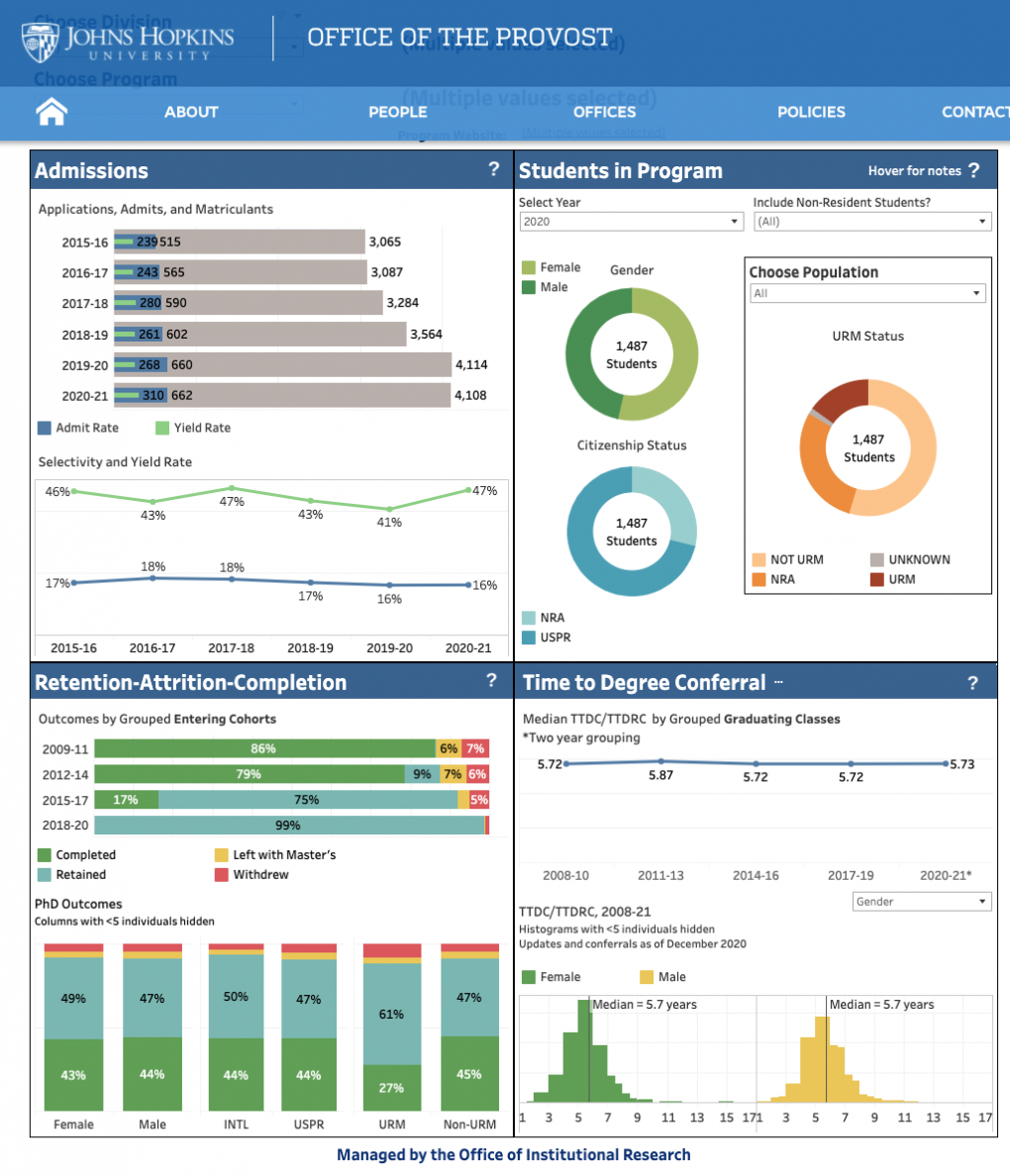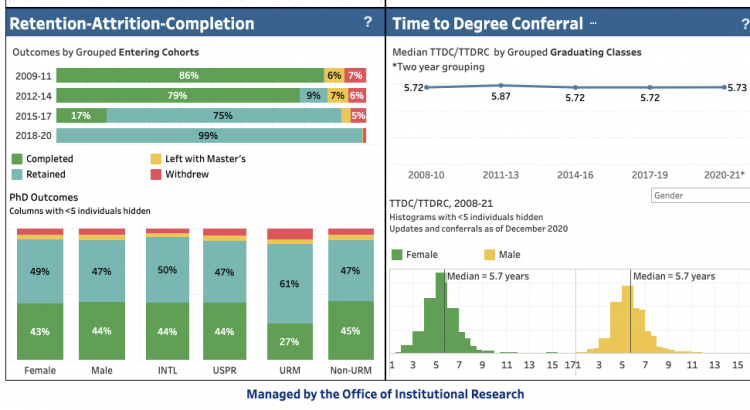Podcast: Play in new window | Download
Subscribe: Spotify | Email | TuneIn | RSS
If you went to graduate school before the turn of the millennium, you probable expected to (eventually) land in a tenure-track position at a University. You may have known a few peers who got teaching gigs, or *gasp* went into ‘industry positions’, but the expectation was to follow in your mentor’s footsteps.
Today, lots of students earn a PhD knowing full well they won’t set foot on the tenure-track. They want to be science writers, policy advisors, staff scientists, or entrepreneurs.
And thankfully, graduate training programs are starting to adapt to this new reality. The first order of business when trying to help students achieve their myriad career goals is to start tracking key metrics.
You Manage What You Measure
Patrick Brandt is the Director of Career Development and Outreach in the Office of Graduate Education at the University of North Carolina at Chapel Hill. He recently penned an article for Inside Higher Ed titled Ph.D.s Benefit When Universities Track Metrics and Outcomes.
He sat down with us this week to talk about his article, and how data is at the heart of the recent effort to improve graduate training.
The Coalition for Next Generation Life Science is comprised of 39 institutions that have committed to tracking data on demographics and student outcomes. You can visit their data repository to find your school, or one you’d like to attend.
Members of the coalition track all sorts of useful metrics, including application and enrollment rates by gender, race, and background.
They also track how long it takes to graduate and how many students complete the training. Useful information if you’re trying to plan your next 4-6 years!
Finally, they follow up with graduates of the program to determine where they’ve ended up. Are most students on the faculty track? Did they go to industry? Or did they end up in academia, but in an administrative or teaching role?
Point of Comparison

It’s fascinating to scroll through the data from different Universities. You’ll discover that a plurality of UPenn grads end up working in the for-profit sector while at UC SanDiego, more stay in Academia.
The median time-to-degree at Johns Hopkins has held steady around 5.7 years since 2008, but careful students will note that a bioinformatics degree from the University of Michigan may take you just 4.7 years!
Patrick also highlighted the National Institutes of Health Biomedical Research Workforce Working Group Report which reinforces the need for training programs to prepare students for a wide variety of careers:
“Graduate programs must accommodate a greater range of anticipated careers for students … and offer opportunities for students to explore a variety of options while in graduate school without adding to the length of training. Graduate programs also should openly communicate the career outcomes of their graduates to potential students.”
Whether you’re trying to choose a graduate program, or you’re currently a student exploring your career options, Patrick’s article has links to research and data you can use to make the best decision.

